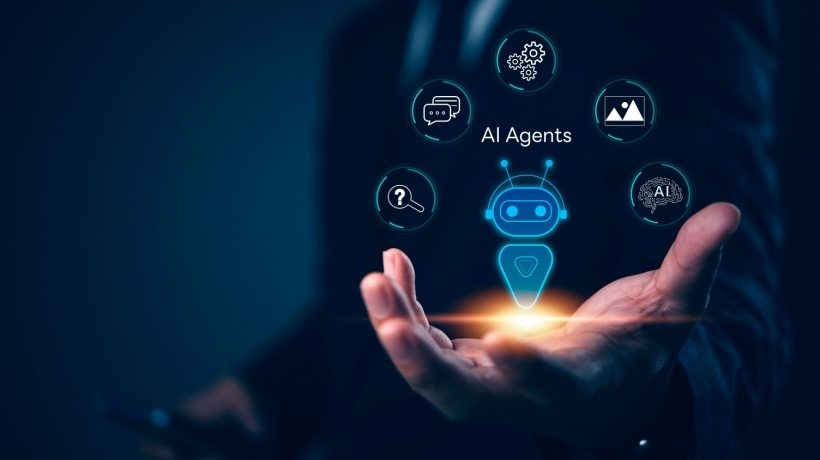Unlock The Power Of AI Analytics In Learning
In the realm of Learning and Development, Artificial Intelligence (AI) is unlocking a treasure trove of data and insights. It's ushering in a new era of reporting and metrics.
This matters especially in today's learning landscape, where 68% of employees want access to more data about their training. And instructors need data to guide effective training decisions.
Upping your data game isn't just about numbers. It's about gaining a deeper understanding of the learning process.
The transformative power of AI in learning analytics can unlock new levels of engagement, personalization, and success in your training programs—ultimately impacting business growth.
A Powerful Partnership: What Are AI-Powered Learning Analytics?
Sorting out valuable insights from vast piles of training program data—including data about learner interactions, assessments, and feedback—can be intimidating. AI can be a powerful tool for not only gathering data but also interpreting it.
Machine Learning (or ML, a branch of AI) uses algorithms to analyze data, "learns" from it, and determines the meaning of emerging patterns and trends.
Here's how it works. AI algorithms are designed to collect training data from various sources, including Learning Management Systems (LMS) and assessments. They identify patterns, trends, and hidden connections that might be invisible to the human eye. Finally, they report their findings in a clear, digestible way.
They let learners and trainers personalize the learning journey. And they lead to better training outcomes for everyone.
Learning With Purpose: The Benefits Of AI Analytics
So, what's the purpose of all this data gathering and analysis? Why do so many employees want more access to data about their training? And what can trainers do with it?
AI-powered learning analytics gives employees and trainers a new level of transparency. And therefore, more control over the learning journey. Here are some of the ways this can improve the learning experience and get the right results.
For Employees
- Autonomy: AI has the ability to create a self-paced learning environment. It enables employees to set their own goals and adapt to their development needs.
- Career advancement: AI analysis of individual strengths and weaknesses makes it easier for employees to take charge of their learning. It can inspire them to seek out more resources. To explore different learning methods. And to drive their own professional development.
- Greater efficiency: Since AI-powered analytics can identify areas where learners are struggling, it can then recommend efficient learning solutions. This helps already busy employees spend less time on ineffective training and more time applying their new skills.
For Trainers
- Improved learning outcomes: Trainers can analyze learner data to identify knowledge gaps and gauge understanding. They can then adapt training in real time to ensure content is relevant and addresses specific learner needs.
- Planning for future training needs: AI can also identify skills likely to be in demand in the future. This allows trainers to develop training programs that equip employees with the skills to contribute to the organization's success.
- Stronger stakeholder support: Data-driven insights help trainers prove the effectiveness of training programs. Showing how they impact business goals and objectives can get better leadership buy-in.
- Improved employee retention: Personalized, effective training helps organizations keep employees engaged and motivated. It leads to improved employee retention, which also plays a role in achieving business growth.
Harnessing Data Power: 3 Key Benefits Of Using AI Analytics That Improve Training Outcomes
The benefits of AI-powered data in training are numerous. But how does it translate into changes people can act on?
Here are 3 key benefits of leveraging AI analytics to help you unlock your L&D initiatives' full potential:
1. Turning Data Into Actionable Insights
Data Aggregation And Visualization
Personalized dashboards and visualization tools make data accessible. Use AI to organize individual and group data intuitively to offer clear insights.
Ok, you've visualized your data. Now, what?
By analyzing individual and group learning patterns, AI can show you how people learn best. And how they engage with training content. Your trainers can then adapt their approach to cater to diverse learning styles and maximize learning outcomes for all.
Real-Time, Automated Individual And Group Feedback
Manual progress tracking is tedious and prone to errors. Use AI tools to track learner progress, updating data in real time.
AI can analyze a learner's current skills and knowledge. Then compare them against job requirements or future career aspirations. This learning gap analysis helps pinpoint where individuals should focus their learning efforts.
It allows trainers to recommend personalized learning paths. That way, they can bridge these gaps and help learners achieve their full potential while saving valuable time.
Social Learning Insights
The best learning doesn't happen in isolation. AI can analyze the social learning aspects of a training program, including:
- Collaboration patterns
- Popular discussion topics
- Peer feedback
Seeing the patterns can help learners identify valuable social learning opportunities. They can connect with peers who share similar interests or goals. Which will create a more collaborative and enriching learning experience.
Sentiment Analysis
AI can analyze the emotional tone of learner feedback and discussions within programs. This can provide valuable insights into learner satisfaction. It can also point out frustration points and highlight levels of engagement with the training content.
This information can help trainers identify areas for improvement in course design and content. And to refine their approach to create a positive and engaging learning experience.
Predictive Analytics For Career Progression
AI isn't just about analyzing the present. It can predict the future. By analyzing historic data and current trends, AI can anticipate future skill demands in the organization and across industries.
This lets you develop strategies to equip employees with the skills to stay ahead of the curve. And to advance their careers.
2. Personalizing The Learner Journey
Gamification
Learning shouldn't be a chore. Gamification (adding elements of play or friendly competition) can make training more engaging. AI can analyze learner preferences and progress. Then personalize gamification elements within training programs.
For instance, you can get information about how to tailor challenges, rewards, and badges based on individual learning styles and goals.
Scenario-Based Learning
AI can create realistic simulated environments that allow learners to practice new skills adapted to their needs.
Real-world, interactive practice scenarios help develop deeper learning and improved problem-solving abilities.
Customizable Alerts And Notifications
Personalized communication is a powerful thing. Use AI tools to send timely alerts and notifications to learners based on their data and progress. This could include:
- Reminders for upcoming deadlines
- Recommendations for additional resources
- Alerts on areas requiring further attention
Adaptive Learning Technologies
Building upon learner behavior insights, AI can be used to power adaptive learning technologies.
These technologies automatically adjust the difficulty level, delivery, and learning pathways based on individual performance and preferences. This ensures that learners are constantly challenged and engaged. And it leads to deeper understanding and better knowledge retention.
3. Aligning To Business Needs
Multilingual Support
AI can translate training content and assessments into multiple languages. Instant, automatic translation makes learning materials accessible to a wider audience. And fosters a more inclusive learning environment.
Enhanced Data Security And Privacy
Increased data transparency shouldn't come at the cost of security and privacy. AI technologies can ensure that learner data remains secure and privacy is protected. For instance, AI can categorize data by privacy requirements or sensitivity. You can then determine which security controls to apply.
Greater security promotes trust and confidence among learners and trainers. And encourages them to actively engage with the training data.
Cost Optimization
AI can analyze data on learning program effectiveness and learner behavior. This information will help you identify areas for optimizing costs. For example, it can show you ways to tailor training content to specific needs, reduce redundancy, or identify alternative delivery methods.
AI And Learning Analytics: Moving Into The Mainstream
AI is rapidly transforming the way we approach and use data in training programs. By presenting insights in easy-to-read formats, AI empowers learners and trainers to engage with the learning process in a meaningful way.
But it's also making training more accessible behind the scenes. Daily data access can guide course creators and training strategists as they develop your strategy. It helps them identify skill gaps, predict future training needs, and optimize effectiveness.
As AI technology continues to evolve, its power in making training more personal and effective becomes evident. The future of learning is data-driven, and AI is the key to unlocking its full potential.










